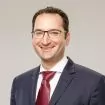The World Cup provides more gold than just the trophy won by the last team standing. The tournament is also a chance for perennial underdogs to capture the attention of the world. Take Costa Rica against five-time winner Brazil, Iceland against two-time winner Argentina, or, most consequentially, South Korea against reigning world champion and four-time winner Germany. On Wednesday, the South Koreans knocked the Germans out of the 2018 FIFA World Cup.
With billions of viewers around the world glued to their screens, the value of a team, player, or sponsor's brand can rise dramatically over the course of the tournament. Success at the highest levels of the game can catapult a soccer brand into a realm of international acclaim typically occupied by only those who have invested heavily in advertising over a long period of time. This phenomenon has been fueled in large part by the widespread use and popularity of social media in sporting events.
For a domestic soccer example, just look at Leicester City Football Club. After winning the English Premier League in 2016, that club's brand went from relatively unknown to international sensation. LCFC trended across media platforms, netting a considerable new fan (and consumer) base.
Teams, players, and sponsors battling to advance in the World Cup tournament are uniquely positioned to capitalize as brand owners, particularly if they have strong intellectual property portfolios at the ready.
But brand owners that unexpectedly find themselves in the world's spotlight may not have the breadth of international trademark filings in place that mature companies use to facilitate product line expansions. This may affect the extent of their product offerings, which can range from jerseys, apparel, and games to software apps, food, and entertainment services. Moreover, a limited intellectual property portfolio could hinder licensing and other lucrative business opportunities.
From a player perspective, this also includes controlling the commercial use of one's identity. For example, Cristiano Ronaldo and Neymar, the Portuguese and Brazilian stars, own and license the "CR7" and "NJR" trademarks and logos, respectively. They have positioned themselves as intellectual property owners to capitalize commercially on the rise of their individual brands.
Brand owners involved in the World Cup and other high-profile sporting events should supplement their trademark, copyright, and domain name coverage as a frontline defense. That way they can take advantage of business opportunities that may quickly follow success, and crack down on counterfeits that will inevitably appear on street corners and websites around the world.
Those brand owners are not alone in the fight against infringements and counterfeits. FIFA implements robust measures to prevent these activities, including use of government enforcement programs, seizure operations, and court proceedings. As part of its 2018 FIFA World Cup brand protection strategy, FIFA announced that it "will [work] together with customs authorities across the world [and] use existing structures ... to take corresponding action, including any legal measures at its disposal, to bring the activity to a halt."
Additionally, because official sponsors make considerable investments to showcase their brands during the World Cup, FIFA also publishes an extensive list of guidelines, which it actively enforces, aimed at enjoining "ambush marketing" from unofficial sponsors. These guidelines target those activities that may give a false association between an unofficial sponsor and FIFA. For example, FIFA prohibits unauthorized third parties from doing "anything which (i) gives rise to any association between such third party and the Competition ... or (ii) directly or indirectly exploits the goodwill associated with the Competition ..."
FIFA's guidelines apply broadly, covering activities ranging from infringement of intellectual property, media, and marketing rights owned by FIFA to unauthorized competitions, sweepstakes, or other advertising or promotional activities. But although these measures help brand owners in general, the onus remains on intellectual property owners to protect their interests before and after the competition.
The world's soccer fans—and its population of consumers of soccer brands—grows exponentially during the World Cup. Savvy brand owners stand to gain long after the celebrations end. Those who are not well prepared, on the other hand, could lose out on lucrative product deals and find themselves overrun with counterfeits and infringements without the tools to stop those activities in a cost efficient and timely manner.
*Benjamin F. Tookey is a summer associate at Finnegan.
The content of this article is intended to provide a general guide to the subject matter. Specialist advice should be sought about your specific circumstances.

